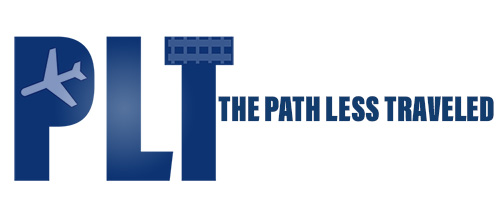Trains, Tracks and their associated equipment are fine items that can easily be overlooked by the traveling public when traveling by train. Yet, they undergo rigorous research and testing before entering service. The Federal Railroad Administration (FRA) built the Transportation Technology Center (TTC) in Pueblo, Colorado in 1971 creating the largest railway test and training facility in the world. In March 2021, the FRA awarded ENSCO INC a half billion dollar contract to provide research, testing and training opportunities at the TTC. For the first time, ENSCO in partnership with the FRA invited media, railroads, academia and manufacturers from across the globe to the first annual open house and conference on November 7th through 8th, 2023. Members of the Path Less Traveled team and attending open house guests received a one-of-a-kind guided tour of the TTC facility. All aboard!!!
Opening Remarks
To kick off the event ENSCO President Jeff Stevens gave some opening remarks, “This event provided an excellent opportunity to bring interested stakeholders together to discuss important research, test, and training priorities for our industry.” There was also a special guest speaker in attendance, Alison Ishihara Fultz, Chief Counsel, FRA. In her opening remarks she emphasized that the TTC facility is an asset to the FRA and the private sector. She highlighted that congress has allocated funding for TTC facility upgrades and use for other government entities such as the TSA and Federal Highway Administration.
ARTC Training Center
Imagine walking through an area with overturned vehicles and train cars. While this may sound like something out of a Hollywood movie, it is actually the landscape of the Ambipar Response Training Center (ARTC). At the ARTC first responders undergo HAZMAT training through classroom learning, mock up train derailment sites and live fire demonstrations. With the introduction of hydrogen passenger trains and freight locomotives, training is conducted at the TTC ARTC center for hydrogen and battery vehicle emergency response and more.
Drone Grade Crossings
Incidents at grade crossings are becoming a common occurrence. Small Unmanned Aircraft Systems (sUAS) commonly referred to as “drones” are being used to mitigate grade crossing incidents. Michigan Tech University in partnership with the FRA is conducting feasibility studies at grade crossings with sUAS platforms. At the open house Kyle Brooks from Michigan Tech demonstrated how his organization is providing groundbreaking research on grade crossings.

After lifting off, the sUAS flies a predetermined route collecting imagery and data real time at grade crossings. Data is immediately collected providing information like pavement anomalies including detecting cracks in real time. The data is then analyzed and used to mitigate grade crossing issues such as low ground clearance. Concrete degration is also being researched following rigorous data collection.

Impact Wall
Similar to how passenger vehicles undergo rigorous crash tests, so do train equipment. Located on property is the impact wall. This strong wall can withstand around 3 million pounds of force. A ram car is used to conduct repeatable impact testing. Tests have been done to measure tank car puncture resistance and passenger rail crash performance. Computer simulations are used before and after the test to supplement and refine findings. The findings are aimed at ensuring railway crashworthiness safety on rolling stock.

Precision Geometry Slab Track
Tracks at the TTC are used to test various rolling stock (train cars or locomotives). The Precision Geometry Slab Track is a specialized track of the the where trains can put the “pedal to the medal” and reach max speeds of 165mph. Rolling stock and track inspection is tested here under specific track geometry conditions.

The Exciting Future
As new trains are hitting the rails, the research put into their testing and development is second to none. With the push for alternative powered trains, the TTC facility in Pueblo is ready to test and train all parties involved with the safe operation of railroading in the United States. A special thank you to the FRA and ENSCO for hosting this exciting one of a kind annual open house.

